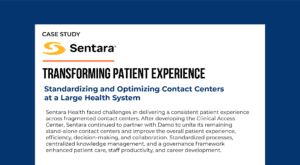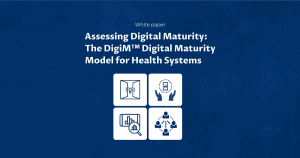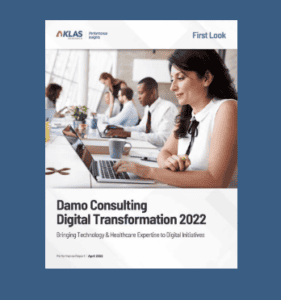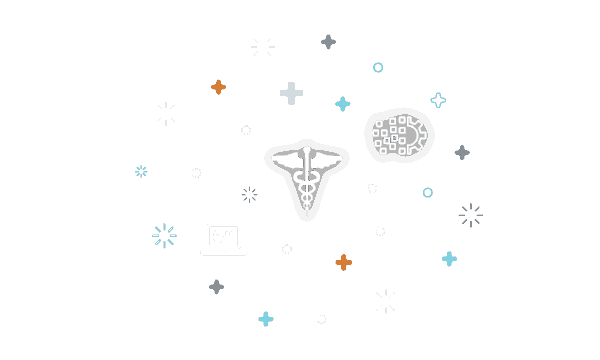Harnessing AI to Transform Innovation in Pharma and Healthcare

In the rapidly evolving world of pharmaceutical research, few organizations embody the promise of artificial intelligence (AI) as comprehensively as Eli Lilly. With a legacy spanning 150 years, Lilly is one of the world’s most established pharmaceutical companies and also the most comprehensive adopters of AI across its value chain, from drug discovery to patient care.
In one of the recent episodes of The Big Unlock podcast, our CEO Rohit Mahajan, and Managing Partner Ritu M. Uberoy interviewed Thomas Fuchs, Chief AI Officer at Eli Lilly, whose journey in AI and healthcare provides valuable context for the company’s current strategy. Thomas’ career has spanned academia, startups, and large-scale innovation, including FDA-approved AI systems in oncology. His deep-rooted belief in the power of code to improve human health has shaped his mission at Lilly that is to make AI a driver of medical breakthroughs at scale.
Listen to the full conversation
From Early Curiosity to AI in Healthcare
Thomas’ fascination with AI began early, inspired by a childhood viewing of 2001: A Space Odyssey. Later, during his academic work, he encountered one of the earliest demonstrations of neural networks distinguishing between cancerous and non-cancerous tissue. “Being able to help people by writing code is something amazing,” he recalls—a realization that propelled him into decades of work at the intersection of machine learning and medicine.
After roles at institutions like Memorial Sloan Kettering Cancer Center and Mount Sinai, and founding multiple startups including Paige.AI, which built frontier AI models for pathology and achieved the first FDA breakthrough designation in oncology AI, Thomas now brings that entrepreneurial mindset to Lilly. He emphasizes – “At Lilly, we have the enormous opportunity to reach millions of patients.”
A Thousand AI Projects and Counting
What sets Lilly apart is the breadth of AI adoption. Unlike startups focused on a single use case, Lilly is running over 1,000 active AI projects across its global operations. The company maintains a centralized AI registry to track projects, ensuring that innovation remains coordinated and impactful.
Applications span nearly every domain of the pharmaceutical value chain including:
Drug Discovery – AI models co-design novel molecules for small molecules, large molecules, and genetic medicines, accelerating research and improving the odds of success.
Regulatory Documentation – Large language models (LLMs) assist in drafting submissions to regulatory agencies, streamlining workflows for highly complex processes.
Manufacturing – Digital twins and computer vision systems optimize production lines, boosting throughput and reducing errors.
Commercial Operations – AI supports sales teams with route planning, physician outreach, and forecasting.
Financial Planning – Time-series models help forecast performance across Lilly’s profit centers.
This sweeping strategy reflects a clear goal – to use AI not just as a point solution but as a transformational lever across every aspect of drug development and delivery.
Success Stories in AI-Driven Innovation
Lilly’s AI portfolio includes several standout initiatives that demonstrate both scientific impact and practical value:
AI-Powered Drug Discovery: Lilly’s internal teams are building foundation models from scratch using decades of proprietary data, including reaction data from more than 20 years of experiments. These models support property prediction, de novo molecular design, and candidate selection. In some cases, AI has already co-designed leading molecules for critical targets, showcasing how digital innovation can complement human expertise.
Manufacturing Innovation: Computer vision models, such as vision transformers, have been deployed in quality control for injection lines, increasing throughput by millions of units. This is a tangible example of AI improving efficiency and scalability in pharmaceutical manufacturing—an area often overlooked in discussions about drug discovery.
Knowledge Access with “Chat in the Box”: Lilly has created an internal system called Chat in the Box, which enables employees to build specialized chatbots to search and analyze organizational knowledge. Hundreds of such bots are now in active use, helping teams work smarter and faster across departments.
These examples underscore Lilly’s approach – blending cutting-edge AI with practical use cases that solve real-world problems and deliver measurable results.
Building Trust and Human Oversight
While the technology is powerful, Thomas emphasizes that AI at Lilly is never about blind automation and human oversight and co-development remain central to every project.
He notes that, “One thing that never works is developing something outside and then trying to throw it over the fence into the application area.” Instead, Lilly embeds AI teams alongside scientists, physicians, and business experts to ensure solutions address real needs and integrate seamlessly into workflows.
Transparency is equally important. Thomas stresses the need to set realistic expectations avoiding both the hype that portrays AI as “magic” and the skepticism that dismisses it as unreliable. Clear communication about what AI can and cannot do builds organizational trust and supports broader adoption.
The Role of Data: A Moving Target
Lilly’s 150-year history provides a unique advantage: vast troves of proprietary data. Unlike many organizations still struggling with siloed or fragmented datasets, Lilly’s data infrastructure was surprisingly well-prepared when Thomas arrived.
Yet challenges remain. New devices and labs generate continuous streams of fresh data, while legacy datasets require ongoing integration. To keep pace, Lilly combines real-world data with synthetic data generation, enabling training at scales otherwise impossible. Thomas compares this to the self-driving car industry, where models must generate more training data than could ever be collected from real-world driving.
This hybrid approach, leveraging both historical data and lab-in-the-loop experiments, enables Lilly to train frontier AI models that push the boundaries of what’s possible in drug discovery.
Educating and Empowering a Global Workforce
Fostering AI literacy across the organization is a key priority. Lilly requires staff in its technology divisions to complete foundational AI training and has appointed AI “change champions” across departments to promote adoption and surface new ideas. The result is a dynamic feedback loop where employees not only use AI tools but also contribute insights that feed into a central registry of projects. This democratized approach ensures that innovation emerges from every part of the organization not just the C-suite or R&D labs.
Challenges in a Regulated World
Pharmaceuticals operate in a uniquely complex regulatory environment. Lilly must comply with requirements from the FDA, EMA, and dozens of other agencies worldwide. This means innovation must balance speed with safety.
In research settings, teams are encouraged to “fail fast,” running proof-of-concept pilots in as little as two weeks. But in areas involving patients or regulators, rigorous quality systems and compliance structures are essential. As Thomas puts it, “You can run fast and break things in research, but you cannot do that when you are patient-facing.”
The Future of AI in Pharma
For Thomas, the future of AI in pharmaceuticals is both exciting and demanding. He identifies several key trends shaping the road ahead:
De Novo Drug Design at Scale
AI is accelerating the generation of synthesizable, high-quality molecules. While new medicines can’t be developed as quickly as AI-generated text, the ability to propose and refine candidates at unprecedented scale represents a paradigm shift.
Rethinking Clinical Trials and Regulatory Processes
Traditional submissions can span 100,000 pages—documents that regulators themselves may soon analyze with AI. Fuchs envisions a future where agencies and companies exchange structured data directly, reducing timelines and accelerating access to safe, effective therapies.
Democratizing Access to Medicines
Manufacturing advances, robotics, and global distribution strategies will play a pivotal role in ensuring therapies reach patients everywhere—not just in high-resource settings. “It’s easier to ship a pill than an injector,” Thomas points out, highlighting how drug design choices impact global access.
Ultimately, the vision is clear: to use AI not just to invent new medicines, but to get them to patients faster, more equitably, and more effectively.
A Human-Centered AI Revolution
Eli Lilly’s AI journey reflects the convergence of technology, trust, and human ingenuity. By embedding AI across discovery, development, manufacturing, and delivery, Lilly is redefining what pharmaceutical innovation looks like in the 21st century.
Yet, as Fuchs reminds us, this transformation is not about machines replacing people. It’s about empowering scientists, clinicians, and patients with better tools and faster insights. “Medicines make our lives better for everyone,” he says. “Doing that by writing code is just amazing.”
In a world where healthcare challenges continue to grow, Lilly’s approach offers a hopeful vision: an AI-powered future where innovation is accelerated, outcomes are improved, and access is democratized—bringing the promise of advanced medicine to millions around the globe.
A Pediatric-Centric Approach to AI
Pediatric healthcare comes with its own unique challenges—fewer available data points, smaller population sizes, and higher sensitivities around communication and consent. This makes the responsible use of AI even more critical.
Dr. Morse noted that solutions must be designed with children and families in mind, not simply adapted from adult care settings. Whether deploying ambient tools, summarizing clinical notes, or streamlining administrative workflows, every use case must prioritize trust, safety, and patient experience.





